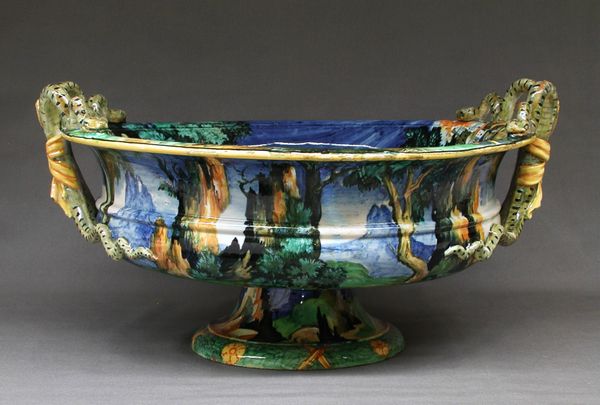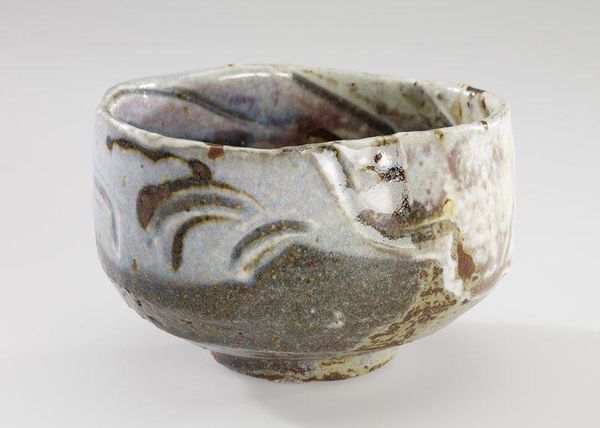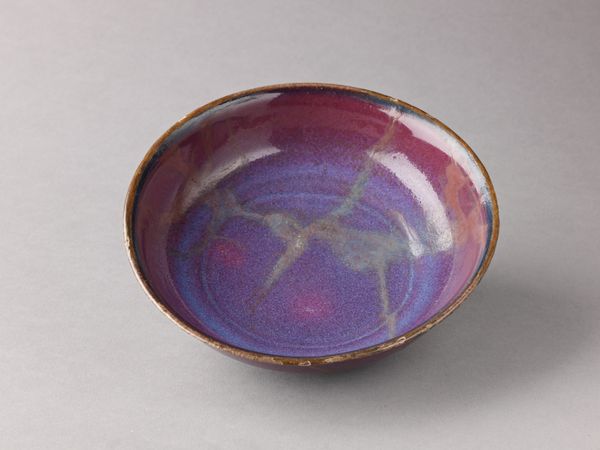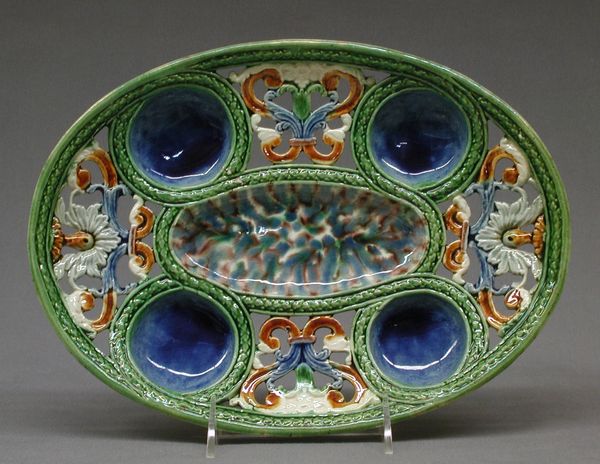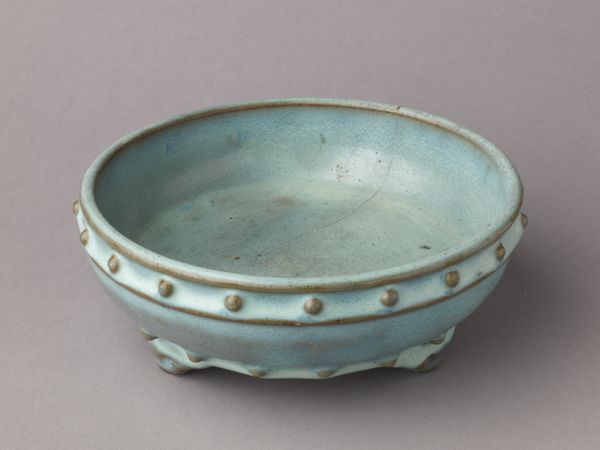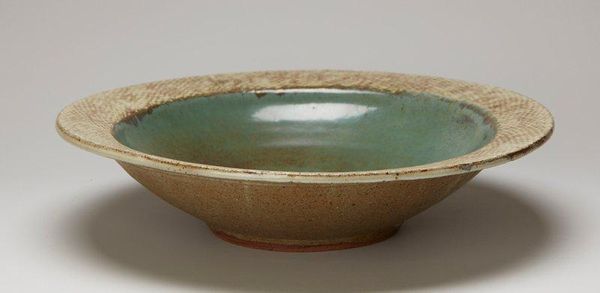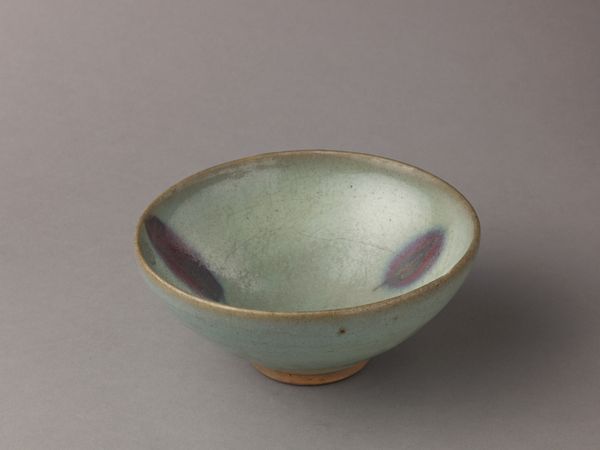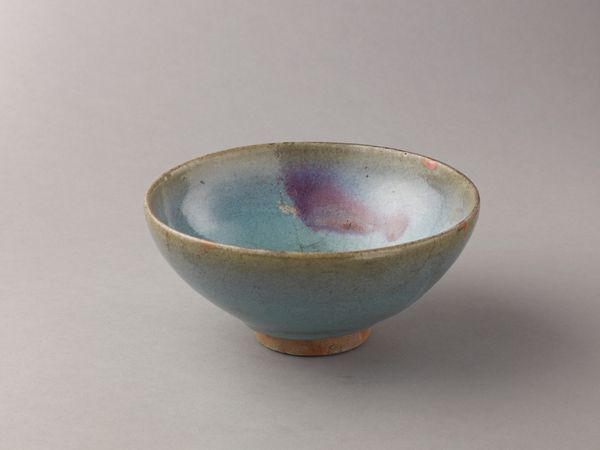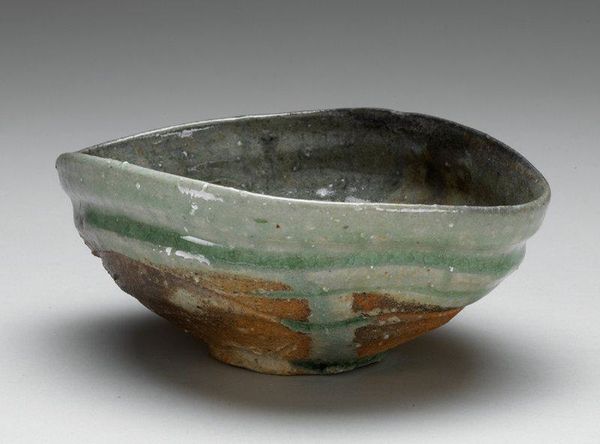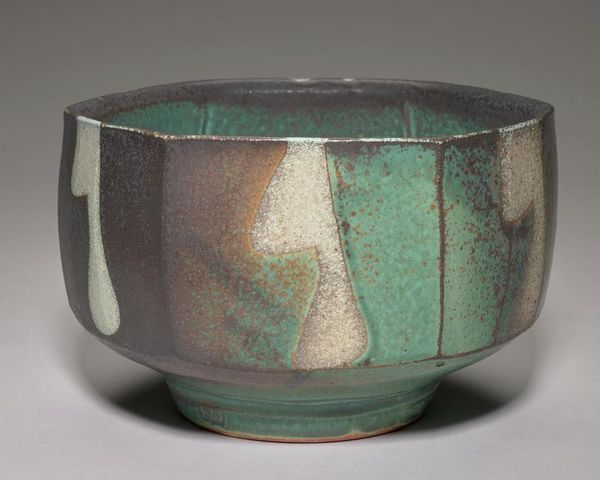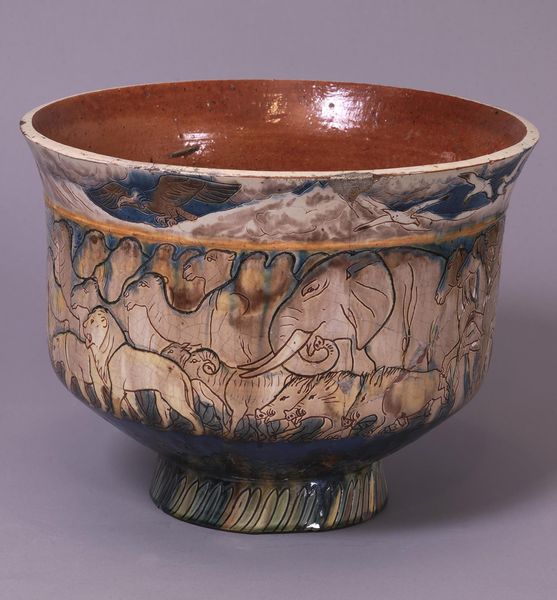
metal, bronze, glass, sculpture
#
art-nouveau
#
metal
#
bronze
#
sculptural image
#
glass
#
sculpture
#
ceramic
#
united-states
#
decorative-art
Dimensions: 3 x 9 1/4 x 9 1/4 in. (7.62 x 23.5 x 23.5 cm)
Copyright: No Copyright - United States
Editor: Here we have Tiffany Studios' Planter, created around 1905. It's made with bronze and glass, a rather interesting combination! It strikes me as quite organic and fluid in its design. What draws your eye when you look at this piece? Curator: Immediately, I’m drawn to the iridescent glass. Tiffany’s work so often features a kind of visual alchemy. The iridescence evokes a sense of constant transformation. Consider what placing flowers or greenery within this planter signifies. The container, man-made and fixed, contrasts the organic, ephemeral qualities of the plant life it holds. It hints at the cyclical nature of life and beauty, a symbolic union of earthly and artistic creation. Editor: That's a fascinating way to think about it! I hadn't considered the dialogue between the container and its contents. Do the subtle floral motifs along the sides enhance that connection to the natural world? Curator: Absolutely. These floral elements, though abstracted, subtly reinforce the object’s intended purpose. Tiffany's design isn't simply decorative; it’s conceptually intertwined with growth, renewal, and the continuous unfolding of nature’s narrative. The vessel anticipates and enhances this process of display. What does the "Art Nouveau" designation tell us about Tiffany's intent here? Editor: Well, Art Nouveau often celebrated nature, flowing lines, and handcrafted artistry... which is all quite apparent here! This discussion has really transformed how I view the Planter, appreciating its depth beyond the shimmering surface. Curator: Indeed! And I'm reminded that, through symbolic objects, we touch upon deeply ingrained cultural associations. Tiffany prompts us to contemplate not just what we see, but what we remember and what we anticipate through the evocative language of objects.
Comments
No comments
Be the first to comment and join the conversation on the ultimate creative platform.
